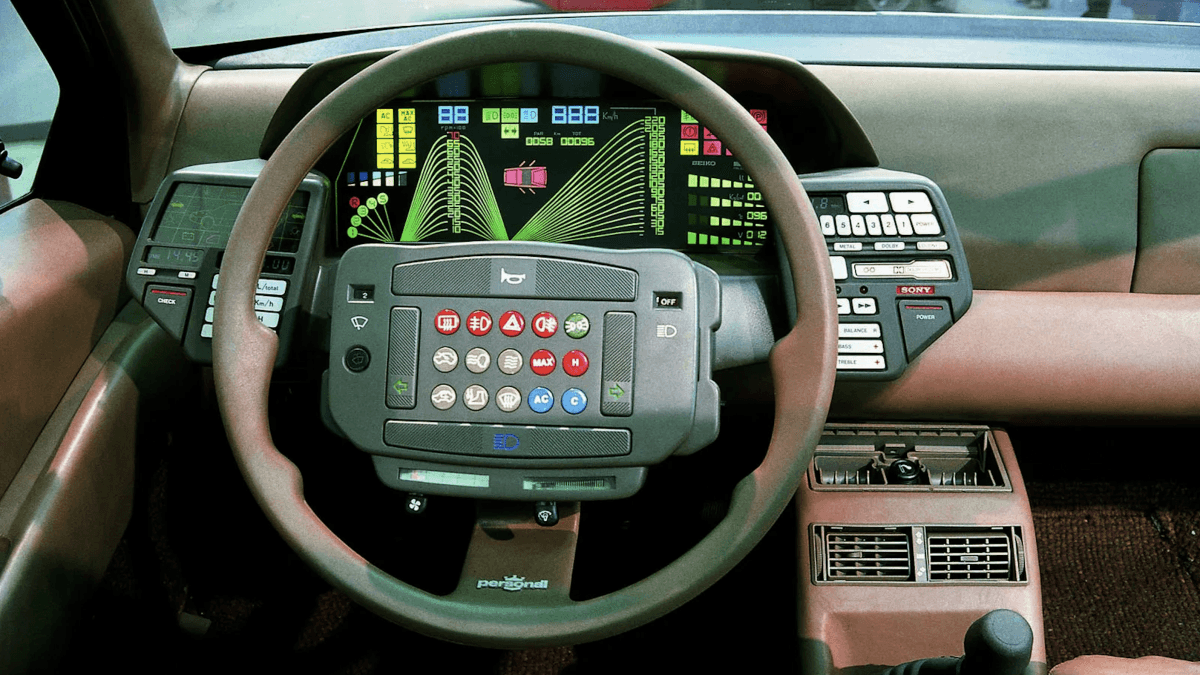Lancia Orca, the car that dreamed of being digital before its time: the industry continued to rely on the economy and reliability of analog in the 1980s.

In 1982, infotainment systems applied to cars were still a rarity. Beyond the occasional warning light or sound system, the industry continued to rely on the economy and reliability of analog as a means of interacting with drivers.
In this context, Lancia dared to launch a prototype that anticipated technologies and designs that are commonplace in the automotive industry today, but which at the time far exceeded the status of futuristic, and that is probably why they were not understood.
It is worth remembering that in the early 1980s the first personal computers had been launched, such as the Commodore 64, the Apple II and the Sinclair ZX Spectrum, and it was clear that they were the beginning of a revolution that would change the world forever.

Lancia—then part of the Fiat Group—read the message and saw a possibility in this new horizon: applying these electronic components to a new prototype car that would represent for the automotive world what these small personal computers were beginning to represent for the new society.
The result was the Lancia Orca, a collaboration between the Italian brand and the legendary Italdesign studio led by Giorgetto Giugiaro, one of the most influential designers of the 20th century. The prototype was presented at the 1982 Turin Motor Show and immediately captured attention with its aerodynamic shape, futuristic approach, and surprising functionality.
It was conceived as a luxury sedan with a five-door, four-seat minivan body—something extremely unusual for its time—with a low, elongated silhouette, clean lines, and smooth surfaces that anticipated the design language that would dominate the following decade.

The platform and engine were none other than those of the Lancia Delta 4×4 Turbo: a 1600 cc engine with 140 hp. The vehicle obviously featured all-wheel drive, anti-lock brakes, proximity sensors, and other electronic aids that would later become commonplace, but at the time seemed like science fiction. It even used fiber optic technology in some places.
Other striking details included its large panoramic windshield, which extended to the roof, and its sliding rear doors, similar to those of a modern minivan. The interior, meanwhile, was equally avant-garde: digital, ergonomic, and designed to maximize occupant comfort. The dashboard was completely digital, something unusual when most cars still relied on analog clocks.

And this aspect was particularly innovative: the controls were located on the steering wheel and activated by ultrasonic pulses—like those on a television remote control, for example—and were fixed; they did not move with the steering wheel, making them easier to use while driving. Even its lighting system was ahead of its time; the headlights were integrated into the body design and featured an unusual front brake light that indicated when the driver applied the brakes to vehicles or pedestrians in front.
In all fairness, it must be said that the Orca was born from the outset as a prototype and was never intended for mass production. Its objective was more to study the viability of digitalization in cars two decades later. However, it would take the rest of the industry another five years to follow suit. Most brands didn't understand why they would resort to a still-nascent and unreliable technology when analog technology was cheaper, easier to repair, and performed its functions perfectly.

Despite this, several of the Orca's elements were reflected in later vehicles. Its styling influenced cars like the Lancia Thema and paved the way for the luxury MPV concept in the 1990s with models like the Renault Espace and the Chrysler Voyager. Today, more than 40 years after its introduction, the Lancia Orca is remembered as an example of how conceptual innovation can change the industry, even without reaching the assembly line, and a reminder that the future of the automobile often begins with a bold prototype.
lavanguardia





